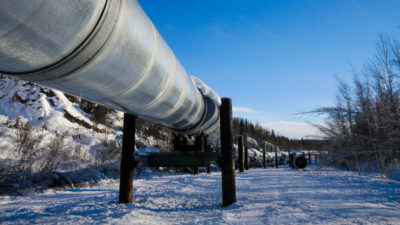The sharp collapse in oil prices has again brought the viability of Canada oil sands into question, primarily because of the tremendous upfront costs required to develop them. In fact, the question surrounding their viability goes far beyond simple economics, with the industry facing an array of challenges in a crude market transformed by a global supply glut.
Now what?
The economics of extracting oil from Canada’s oil sands, which make up 90% of its oil reserves, have become questionable in recent months with oil trading at less than half of what it was a year ago. This because while existing oil sands projects have low breakeven costs, new projects are considerably far more costly with those costs approaching or even exceeding US$90 per barrel.
You can see this with existing projects such as Imperial Oil Ltd.’s (TSX:IMO)(NYSE:IMO) Kearl Phase 1 project which has breakeven costs of US$42 per barrel, whereas Suncor Energy Inc.’s (TSX:SU)(NYSE:SU) Fort Hills project, that is currently under development, has a breakeven cost of US$90 per barrel.
However, this is not the only headwind the oil sands face, with environmental concerns gaining further momentum and placing pressure on an already delicately placed industry.
This is because there is growing international pressure for countries to cut their greenhouse gas emissions in order to fight global warming and the oil sands are Canada’s fastest growing source of greenhouse emissions. In fact, the oil industry as a whole is the single biggest generator of greenhouse emissions among Canada’s economic sectors.
This makes it a key target for governments focused on reducing Canada’s greenhouse emissions.
As a result, Alberta’s government is taking a tough stance on greenhouse emissions and announced that it intends to double the province’s carbon levy by 2017 as it focuses on significantly reducing the province’s overall carbon footprint. This will add another cost and layer of complexity to an industry operating under the burden of lower crude prices.
So what?
Clearly, the odds are stacked against Canada’s oil sands with the current harsh operating environment coupled with increasing environmental pressures essentially making new projects uneconomic. As a result, investment in Canada’s oil sands for this year is expected to be 30% lower than last year, while margins for oil sands producers continue to remain under pressure.
Accordingly, as the secular trend for clean energy grows in momentum and renewable sources of energy become cheaper, it is quite possible that the oil sands could become stranded assets. This means that because of their high development costs and the amount of potential environmental damage that their extraction can do, they will become costly liabilities.
This makes it imperative that investors only select those companies that have an already established portfolio of long life, low cost oil sands projects like Suncor. It has been estimated that Suncor’s portfolio of oil sands projects has an average breakeven cost of US$30 per barrel, which means that they remain profitable even with WTI at US$50 per barrel.
Imperial Oil also remains a firm favourite because it continues to deliver the best return-on-capital or ROCE of any of the oil sands operators. Like Suncor, Imperial’s refining operations will generate a higher margin for as long as oil prices remain low, thus helping to offset diminished margins from its upstream or oil producing operations.







